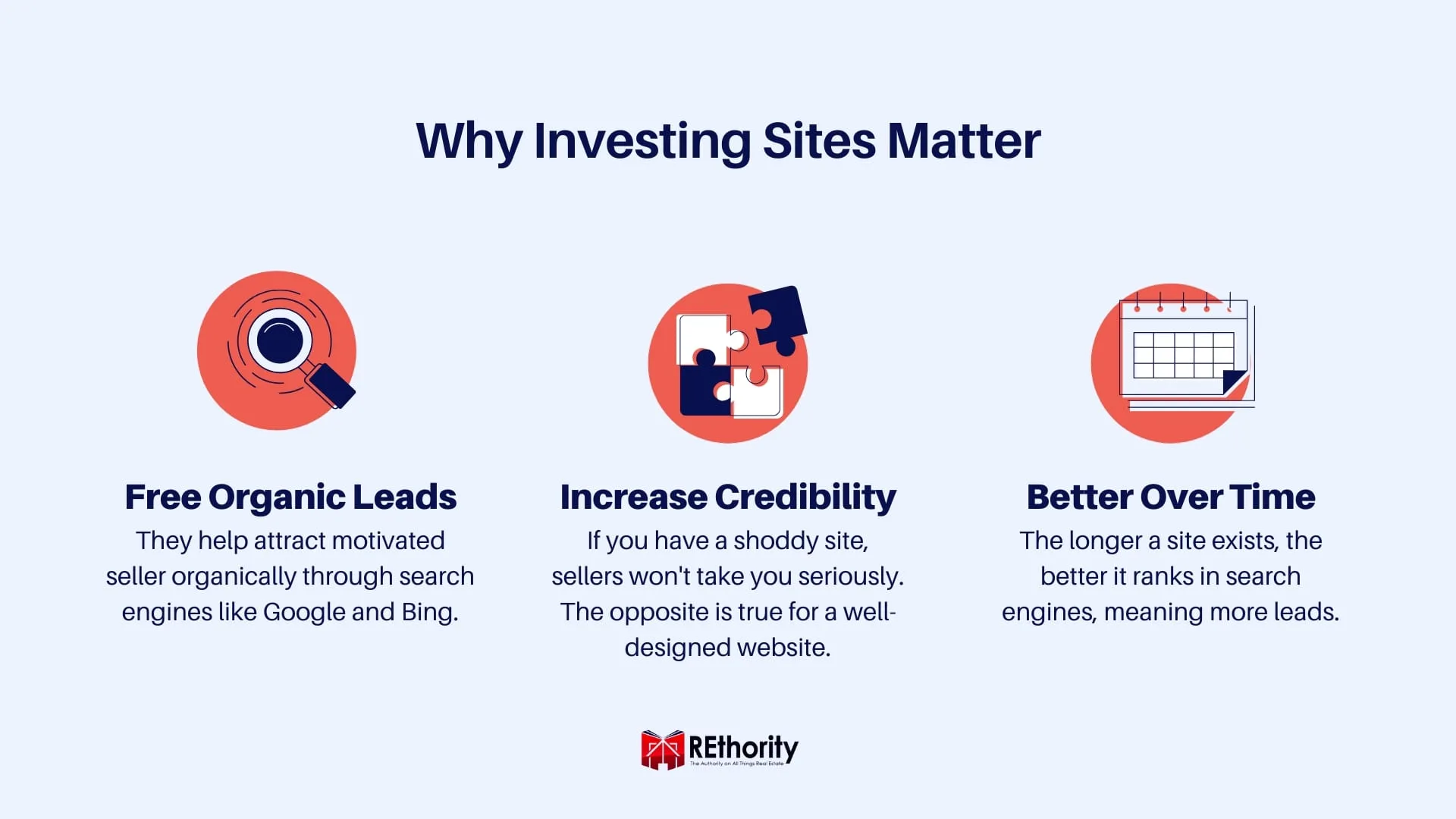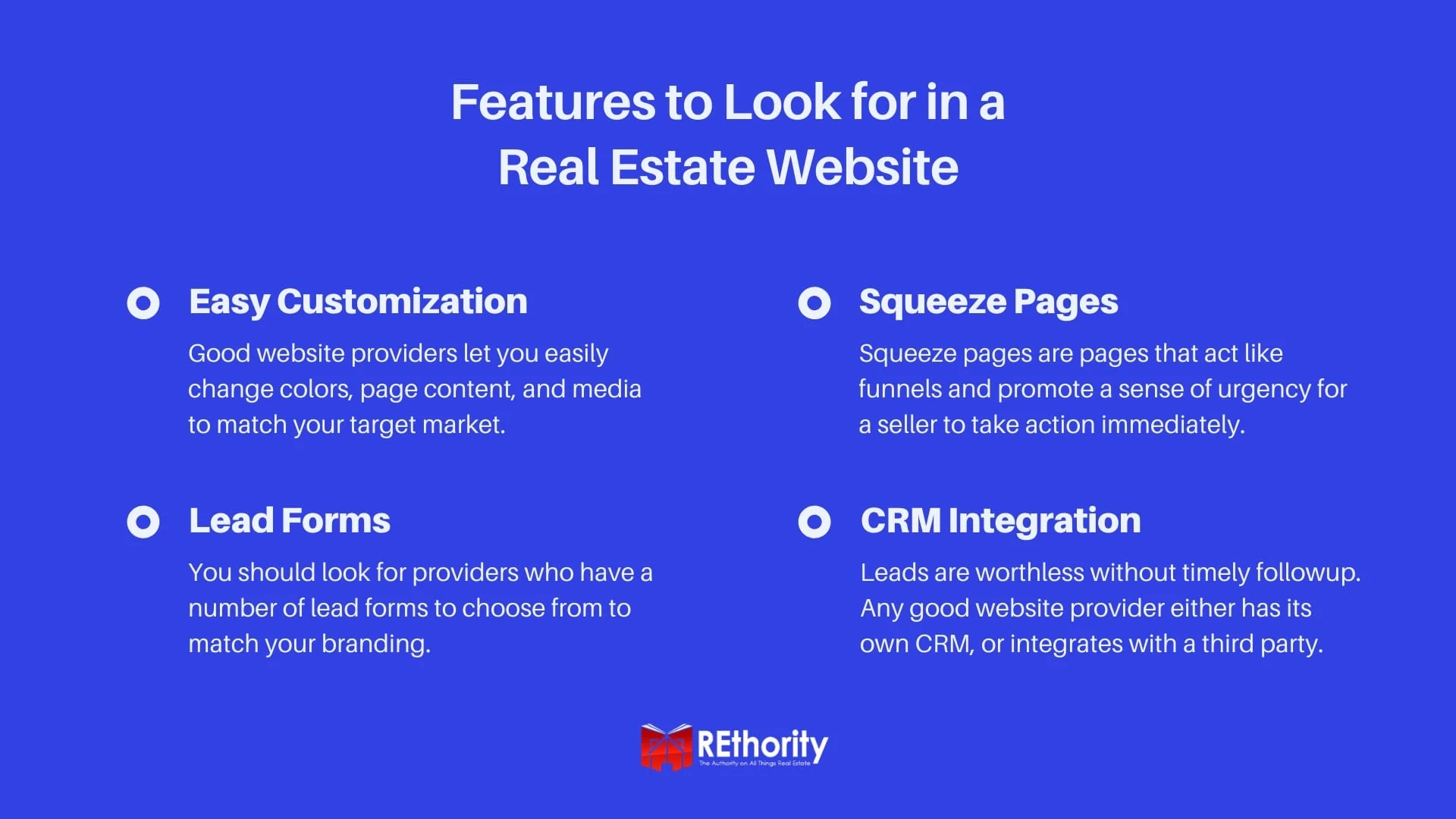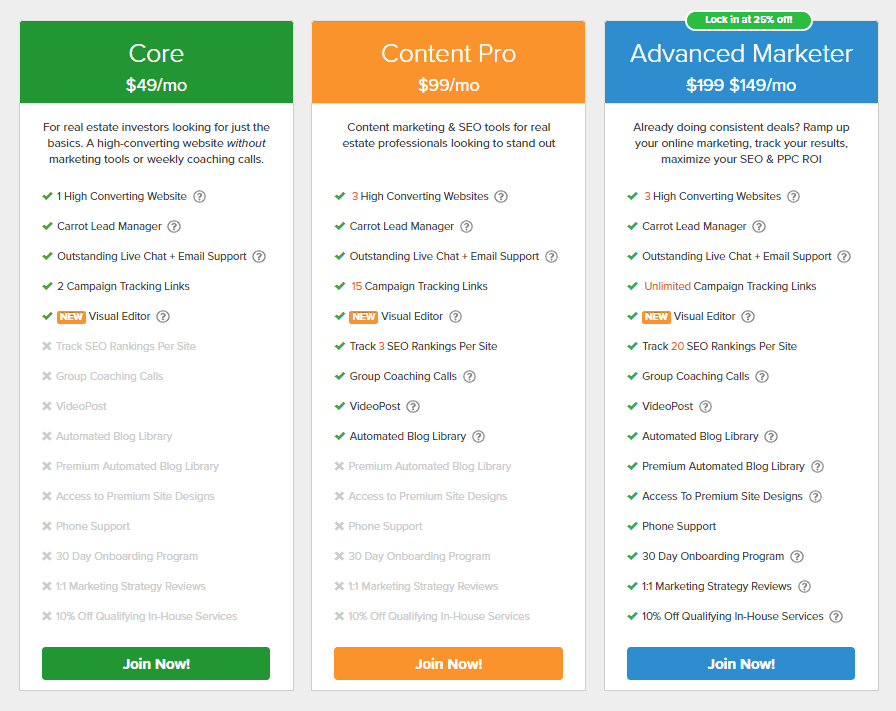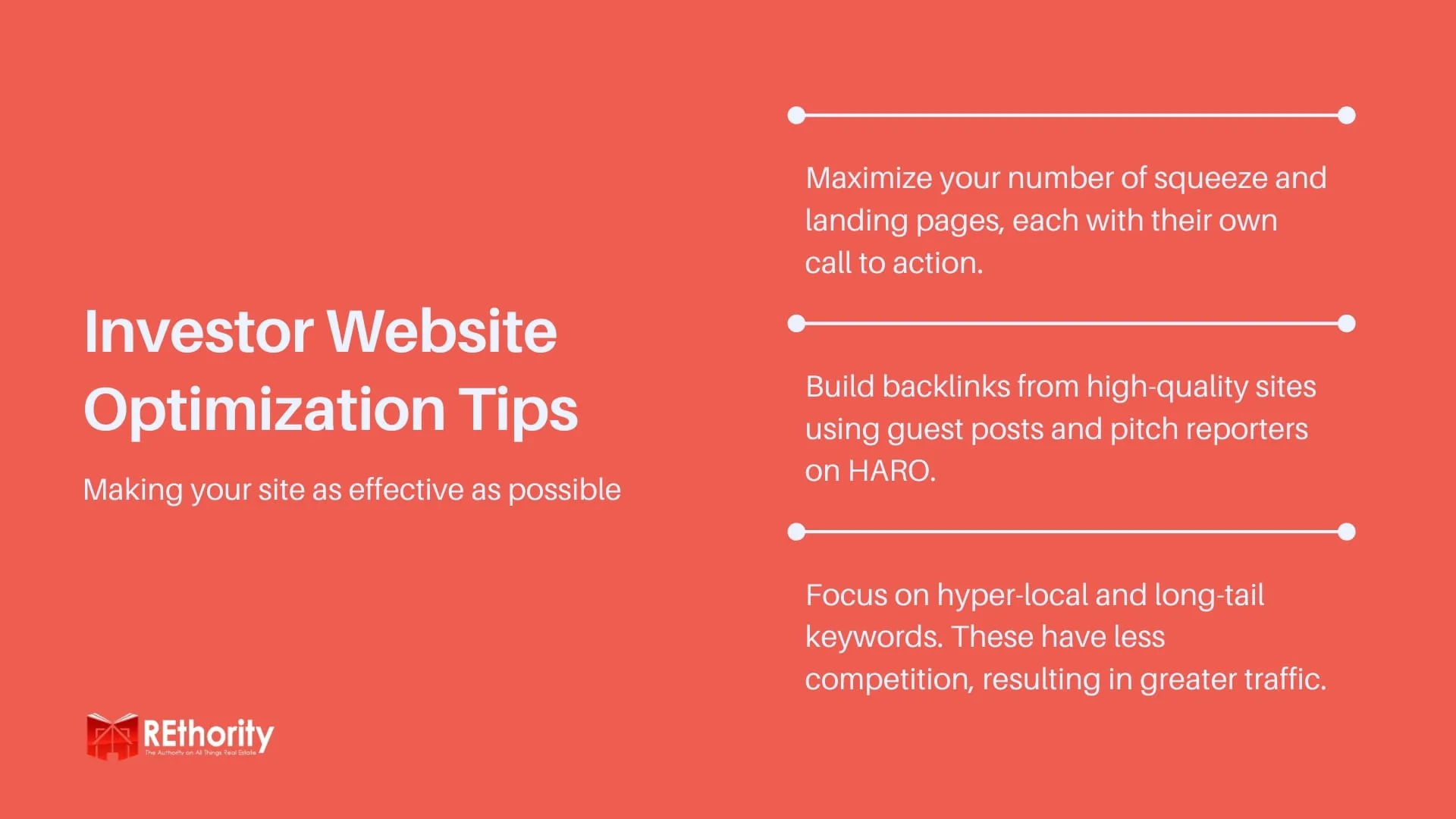Real estate investor websites come in all shapes and sizes, but building one does not need to be stressful.
Read on to learn how you can hire a developer, buy a template, or rent your own site to get more motivated seller leads.
Why Real Estate Investor Websites?
If you’re serious about investing in real estate, you’re always looking for new leads from any source you can find. The best (and most cost-effective) method to generate a steady stream of leads is to build a real estate investor website.
If you’re asking if you need a website, the answer is yes, you absolutely do. Your website should attract leads through a variety of channels, including PPC advertising, social media, and direct mail.
Your investor website can become a central destination for all your leads, whether you attract them with a sign in a yard, a postcard, a Facebook ad, or a Google ad.

It doesn’t matter if you’re investing in single-family, multifamily, wholesale, short-sale, or fix-and-flip real estate. Having a website is a necessity if you want to ensure a constant source of leads. As a real estate investor, you’re an entrepreneur.
If you think building a website is too complicated or time-consuming, you’re not alone. About 36% of small business owners still don’t have a website for this same reason. The truth is that using a high-quality website builder can make this process quick and painless.
With the advances in “drag and drop” websites, you can easily create a website that looks professional, is customizable, allows you to create additional landing and squeeze pages, and helps you track and manage the leads you gather through it.
We’ve got some great tips and step-by-step instructions for you in this guide to building a real estate investor website. We’ll look at the most common investor website features you should look for, important methods to keep leads on your website longer and several ways to optimize your website to bring the best leads in.
We’ll also guide you step-by-step on how you can start building an investor website today with Carrot.
Your goal is to attract visitors, convert leads, and optimize your website for better performance. Let’s get started!
Real Estate Investor Website Features to Look For
Real estate investor websites need a few general features and a few industry-specific features that may not be available from many general website builders. Below, we list the most important features you should look for as you prepare to create your investor website.
Customizable Templates
If you’re looking at a website builder that offers only one template, you’re in the wrong place. With millions of websites online today, it’s important that yours doesn’t look identical to others. Every industry requires a different type of template, too.
As an investor, you wouldn’t want to use the same template as a restaurant website. The ability to customize templates is also important.
You should be able to rearrange and add or remove sections, change fonts, add a logo, choose colors, and more. Make sure you can customize your website to make it your own.
Lead Forms
This is an important feature for any website, but especially for real estate investor websites. When you bring people to your site, you need an easy way to collect their contact information so you can follow up.
With a website builder like Carrot, you can drag a lead form anywhere you’d like on your website pages. You can have your lead form stay in one place or include a button that a user can click to open the contact form.
Lead Magnets
No matter how you create your website, lead magnets are an essential feature for investors. What can you offer users that other websites might not? Lead magnets serve to attract targeted leads right to your website.
Users will get the “magnet”—a downloadable guide, access to a property valuation tool, etc.—in exchange for offering their contact information. How do you bring people to your lead magnet offering? Through squeeze pages, which we’ll talk about next.

Squeeze Pages
While you should be able to place a lead magnet on any page on your investor website, you’ll also need the ability to create squeeze pages on your site.
These pages serve to narrow the sales funnel and “squeeze” your leads into a limited portal where their only option is to enter their information and get the magnet you’re offering.
Navigation bars, sidebars, and other offers are not visible on squeeze pages—just the offer. When you use a builder like Carrot, the work is done for you. They’ve created squeeze pages that are proven to be effective and help direct your leads to enter their information.
Once you have their information, you can follow up by fulfilling your end of the bargain: Send them an initial offer on their property, automatically email them a property value report, give them a downloadable guide, etc.
Not every page on your website needs to be a squeeze page, so the next thing you’ll want to look for in an investor website builder is the ability to create landing pages.
Landing Pages
Landing pages accomplish a few things for you. They allow you to address highly targeted parts of your audience.
They enable you to get that highly targeted lead information by including a lead form on the page. They give you a chance to better rank in search results your leads will see.
This is because you can use specific, long-tail keywords as the title and headers within the landing page that you wouldn’t necessarily want your entire site to be linked with.
For example, you might have a landing page with the title “We Buy Houses for Cash in Minneapolis | Fast Offer, Quick Close.”
When someone searches for cash home buyers in Minneapolis, your landing page is more likely to show up in their search results than a general website that says “We Buy Houses for Cash | Fast Offer, Quick Close.”
CRM
A CRM is a Customer Relationship Manager. It’s software that helps you see and organize the information about your leads once they’ve been to your website, and you’ve collected their data.
A good investor website builder should give you the ability to use a simple CRM they offer or to connect your site to a CRM you’re already using. To make your investor website as effective as possible, you need to make sure you have measures in place to track and manage your leads once they visit your site.
Without a real estate CRM, you’ll have a hard time keeping all your lead information organized and accessible. If the website builder you’re using doesn’t have a CRM included, it should have the ability to integrate with your CRM.
Carrot does have a simple CRM lead manager that lets you look at your leads in order, see their property information, and view how many of your leads end up converting.
How Much Does a Real Estate Investor Website Cost?
There’s a wide range of pricing options when it comes to building an investor website. How much should you expect to spend? On average, you can expect to spend about $25/month to over $200/month for an excellent real estate investor website.
On the low end, around $25-$50 per month, you pay a great price but get fewer features and template choices. And on the high end, closer to $200/month, you pay more per month to get more website customization options, more features, and better support.

Image Source: Carrot.com
Let’s take a look at Carrot’s pricing plans so you can get a better idea of what you get at each pricing level. In our opinion, it’s the best website platform for real estate investors.
Carrot Pricing | $49/month to $149/month
- At $49/month on the Core plan, you get a website, lead manager, a visual website editor to make custom changes, plus bonus features like campaign tracking links to help you see where your leads came to your site from and live chat support from the Carrot team.
- For $99/month on the Content Pro plan, you get all the features from the Core plan plus an SEO rank tracker, optional group coaching calls, the ability to add videos to your website, and an automated blog library that gives you pre-written posts you can add to your website’s blog.
- At $149/month on the Advanced Marketer plan, you get all the features from the Core and Content Pro plan, plus additional pre-written blog posts, premium website designs and templates, a dedicated specialist who helps you get your website running, marketing strategy sessions with a Carrot team member, and 10% off any additional Carrot service you want.
Learn more about Carrot and the features they offer for real estate investor websites in our full Carrot review here.
How to Optimize an Investor Website
Once your investor website is up and running, you’re off to a great start, but you’re not finished. You should always be working on optimizing your website to get more leads, improve your metrics and analytics, and increase your search rankings.
Optimize for More Leads
Here are a few ideas to optimize your investor website to bring in more leads.
Make It Easy. Don’t make your visitors work to give you their information by requiring a lot of information at once. Carrot websites come with lead forms that first allow leads to enter a small amount of information.
Just their name and email, for example. And once they have, they’ll be asked to enter more details. If they choose not to, you’ll still have their name and email to get more information later on.
Drop Forms and Lead Magnets. When you see which pages on your website are getting the most traffic, make sure you have a lead form there! High-traffic pages give you an excellent opportunity to put a lead magnet (like “Download my guide to selling your home in less than 30 days”) and collect contact information from your leads.
Utilize Calls to Action. CTAs have a lot to do with how many people convert by giving you their contact information, signing up for a newsletter, or taking advantage of a lead magnet offer you’ve created.
Change a few words, the color of the button (red converts better than green, for example), or the placement of the CTA. You could increase conversions with a small but essential change like this.
Improve Your Metrics
The longer your site is online, the more data you will have to work with. When you start to see trends in how long users are on your site, how many visitors leave without converting, and the pages that get the most traffic, use these tips to improve your website metrics further.
Remember the need for speed. No one wants to wait for a website to load. In fact, 40% of visitors will leave right away if your site hasn’t fully loaded within 3 seconds. You can use a speed tester to check your site’s loading speed. We like Pingdom.
Make it mobile-friendly. With most users accessing the internet from mobile devices, it’s a terrible mistake to have a website that isn’t mobile-friendly. Google will penalize your site in search if it isn’t!
Mobile-friendly websites are responsive, meaning their templates will shift around to make the site look best on any size screen or screen orientation. You can check to see how mobile-responsive your website is with this Google tool.
Add internal links. Not every user will be ready to convert right away, so make sure you’re giving them plenty of additional reading and information on your website. On a page that talks about buying houses for cash in a specific city, add a link to one of your blog posts on a similar topic.
This not only helps Google see how your website is structured, but it also gives users another place inside your website to go. The longer they’re there, the better the chance that they’ll convert!

Increase Your Search Rank
The more users that see your website in their search results, the more traffic you’ll get – and the more interested leads you’ll generate. You need to optimize your site over time to improve your search rank. Here are a few ways to start.
Keep Keywords First
The closer your keywords are to the start of any title or header on your website, the better off your site will be in terms of Search Engine Optimization (SEO). Say Google sees that a keyword is near the start of important text like a title or header.
As a result, it assumes that the keyword must be predominantly what your page is about. That’s one of the criteria Google uses when it chooses which websites should show up first in search.
Use Long-Tail Keywords
It’s tough to rank well for popular terms like “cash home buyer.” It’s less of a challenge to rank well for keywords that are longer and more specific, like “Middle TN cash home buyer.”
Not only is there less competition with other websites for long-tail keywords like these, but the visitors that arrive at your site are better targeted because they’re searching for precisely what you’re offering.
Use LSI keywords
LSI (latent semantic indexing) keywords show search engines what your site is about. You want to have a lot of keywords that Google considers related to the keywords you’re trying to rank for.
One simple way to find LSI keywords you should include on your site is to let Google do the work. Just type in one of your keywords and see what comes up in the search bar with autocomplete.
For example, if you start typing “Sell my house,” you’ll see that the LSI keywords are “sell my house fast,” “sell my house now,” and “sell my house fast for cash.” Now you know what other terms to include on your site!
Should You Use Real Estate Investor Websites?
Building a real estate investor website doesn’t have to be a huge undertaking. If you use the right website builder (one specifically for REI is best), take advantage of the features your builder offers, and put in a little time to optimize your site, you can create a steady stream of leads to follow up on.
As long as you create optimized landing pages and squeeze pages that convert passive visitors into leads, you’ll be able to tap into the huge market of motivated sellers online that want to sell their properties for cash quickly.
Once your website is operational, you might find that tweaking and optimizing it becomes a new hobby for you. There’s no better feeling than seeing how a seemingly small change results in 34% more conversions or five additional form completions in a day.
Remember the three golden words for building your website: Attract, Convert, Optimize. If you’re serious about turning properties into profit, a real estate investor website is essential.

